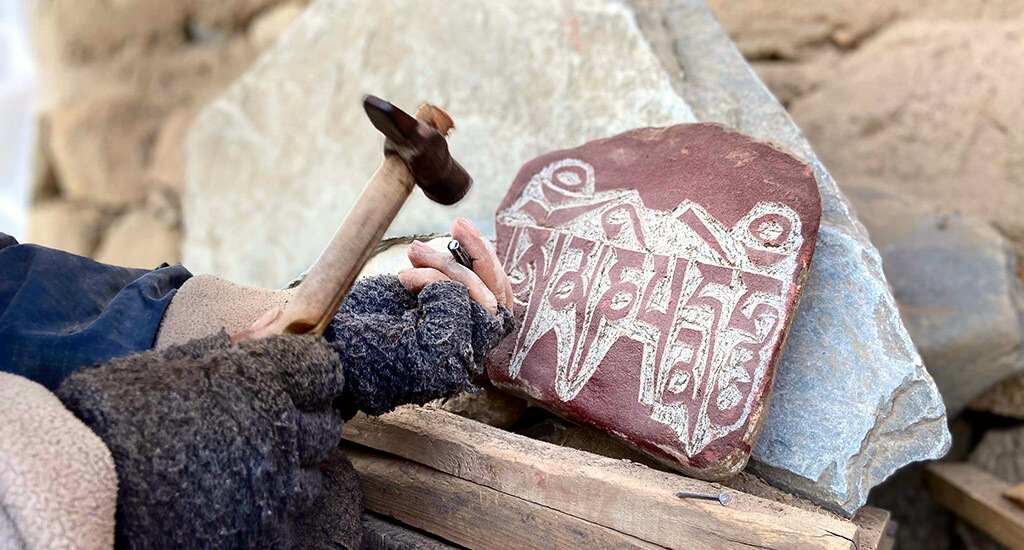It’s rather time-consuming and laborious. You need patience and perseverance.
My hard work begins with collecting the stones from mountains and valleys.
I usually book a truck and hire helpers to collect the stones from Meru-Tse Thang near Matho village, some 25 kms from Leh. We usually make three trips a year.
Not every stone qualifies to be a mani stone. They must be smooth and also hard to be chiselled.
Having selected the stones, I colour them in red and then inscribe the prayers.
My hands ache and my eyes hurt at times. But I never flinch from my task.
Because I must do my part in making the passage of the departed soul to the other world smooth.
I’m a mother of three lovely children.
At stake is not just my livelihood. Rather, for me, carving mani stones is an important part of preserving Tibetan culture and heritage.
Also Read | Festivals in India: What’s behind the masks in Leh’s Hemis Festival?




